La Turbie brings back fond memories of my childhood. I was greatly interested in Roman ruins, and the visit to the Trophy of Augustus impressed me. The monumental commemorative structure stands above the Principality of Monaco. Since the times of Roman Emperor Augustus, the monument has stayed a symbol of the dominating power of Rome in Gallia Narbonensis (today’s Provence and Languedoc).
Watch our short video on the French Riviera, an aerial journey from Toulon to Menton via Saint-Tropez, Cannes, Nice and Monaco ⤵
Plan your trip to La Turbie and the region of Nice!
- 🏨 Find the best accommodations in Nice and the region on Booking.com
- 🙋♀️ Get the PASS CÔTE D’AZUR and take your pick from more than 100 unique experiences!
- 🎟️ Buy your ticket to visit the Trophy of Augustus
- 🌴 Read our Discovery Guides of Eze, Menton, Monaco, Peille and Peillon.
- 🎯 Take a guided hidden gem tour of Monaco
- 🥗 Experience the culture and food of Old Nice on a 4-hour sightseeing and tasting tour
- 📚 Read the DK Eyewitness Provence and the Côte d’Azur Travel Guide
- 🤩 Get familiar with the French Riviera
- 🗺 Download the city map of La Turbie
- 🚗 Park at the entrance to the old medieval centre: Place Neuve or Place de la Crémaillère. Place Théodore de Banville is the closest to the centre but is often occupied by the market.
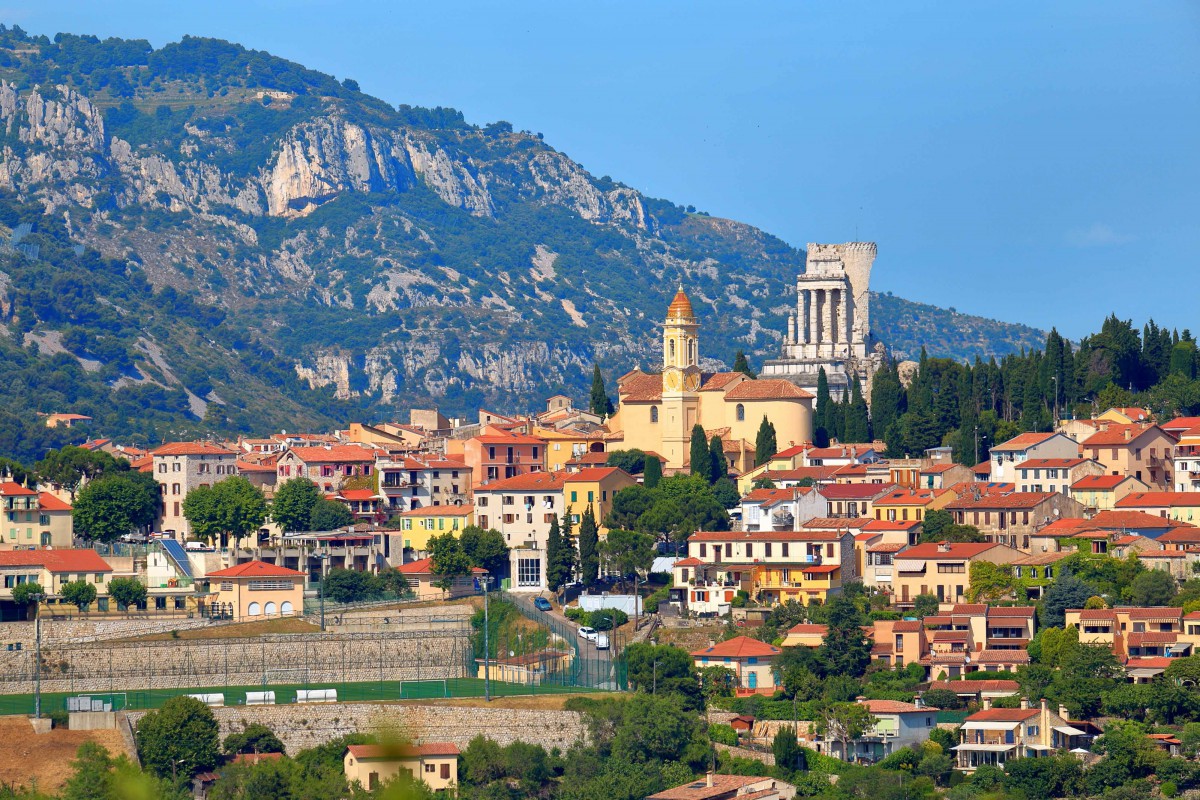
Where is La Turbie and the Trophy of Augustus?
The Tropaeum Alpium (in French: Trophée des Alpes) majestically stands in the commune of La Turbie on the French Riviera. It overlooks the Principality of Monaco and lies 7 km from the hilltop village of Èze and 16 km from Nice.
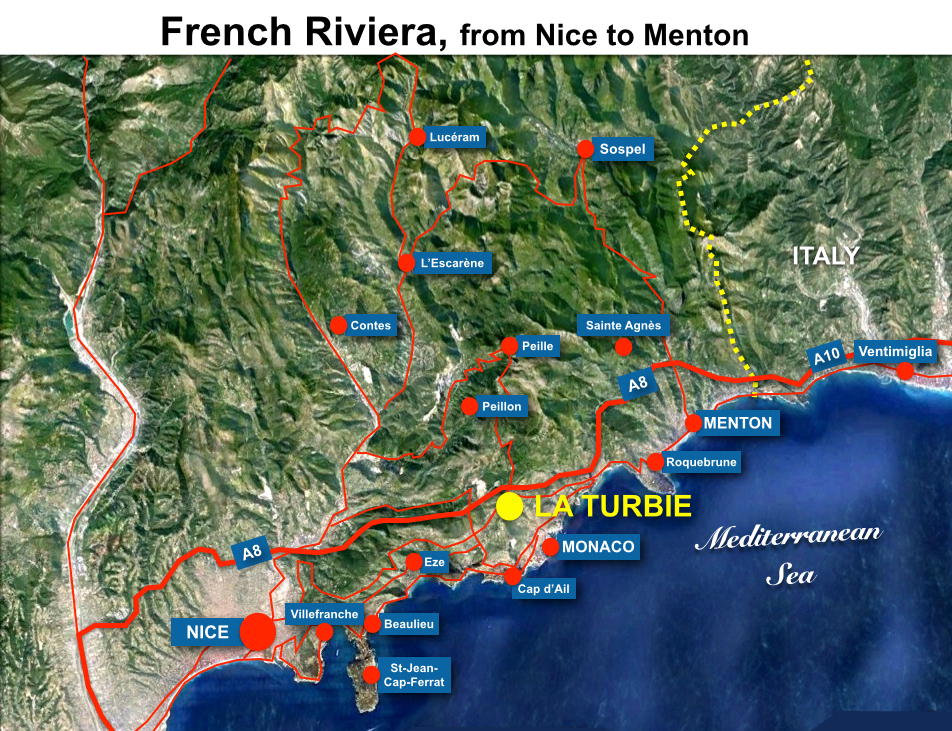
Due to its gigantic dimensions, you can see the Trophy of Augustus from many viewpoints: La Turbie and Monaco.

You can reach La Turbie with the scenic Grande Corniche road that links Nice to Menton.
The Trophy of Augustus: a bit of History
![La Turbie © Berthold Werner - licence [CC BY-SA 3.0] from Wikimedia Commons](https://frenchmoments.eu/wp-content/uploads/2014/08/La-Turbie-©-Berthold-Werner-licence-CC-BY-SA-3.0-from-Wikimedia-Commons-1.jpg)
Waging war in the Alps
Many local tribes obstructed the passage of merchants through the mountain passes of the Alps. Their controls and impediment to trade were unacceptable for the Roman Empire, which engaged in a long war with the rebellious 44 tribes. The military campaign against the tribes lasted between 16 and 7 BC.
The submission of the Alpine people to the authority of Rome made possible the extension of the Via Aurelia (Rome to Pisa) with the construction of the Via Julia Augusta in 14 BC.
The Romans had the Trophy of Augustus built on the Via Julia Augusta. It was strategically vital because it linked Rome with many towns on the French Riviera in Provence, Spain and Northern Gaul.
The Tropaeum Alpium’s structure
Roman emperor Augustus commissioned the monument to assert and celebrate his definitive victory over the peoples of the Alps.
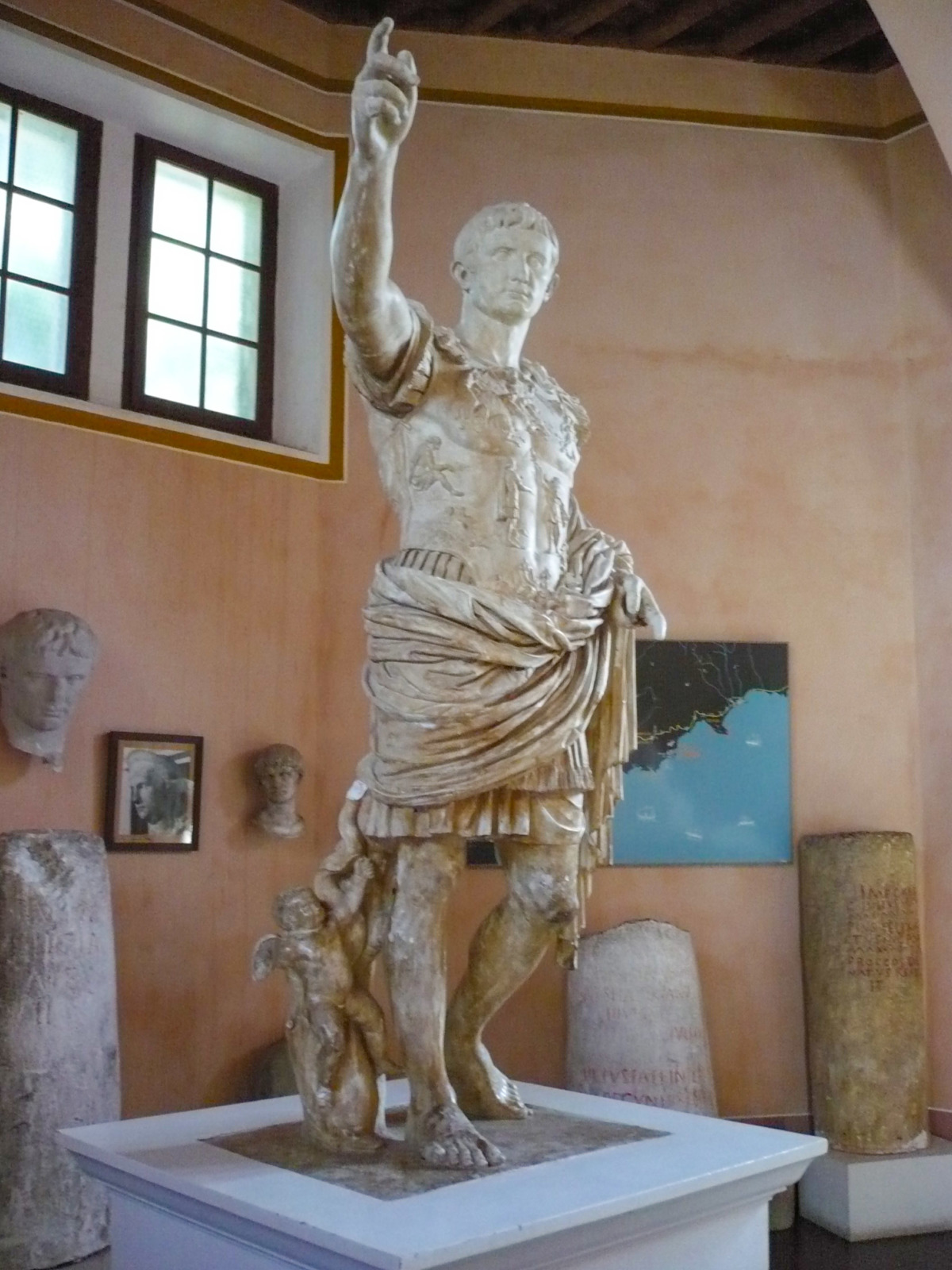
Neither a mausoleum nor a military structure, this notable artefact of the dominating power of Romans was built in 6 BC on a mountain ridge at a mansio called Alpis Summa (Alpine Summit). At completion, it was used to mark the boundary between Italy and Gallia Narbonensis (which would later be pushed westward to the River Var).
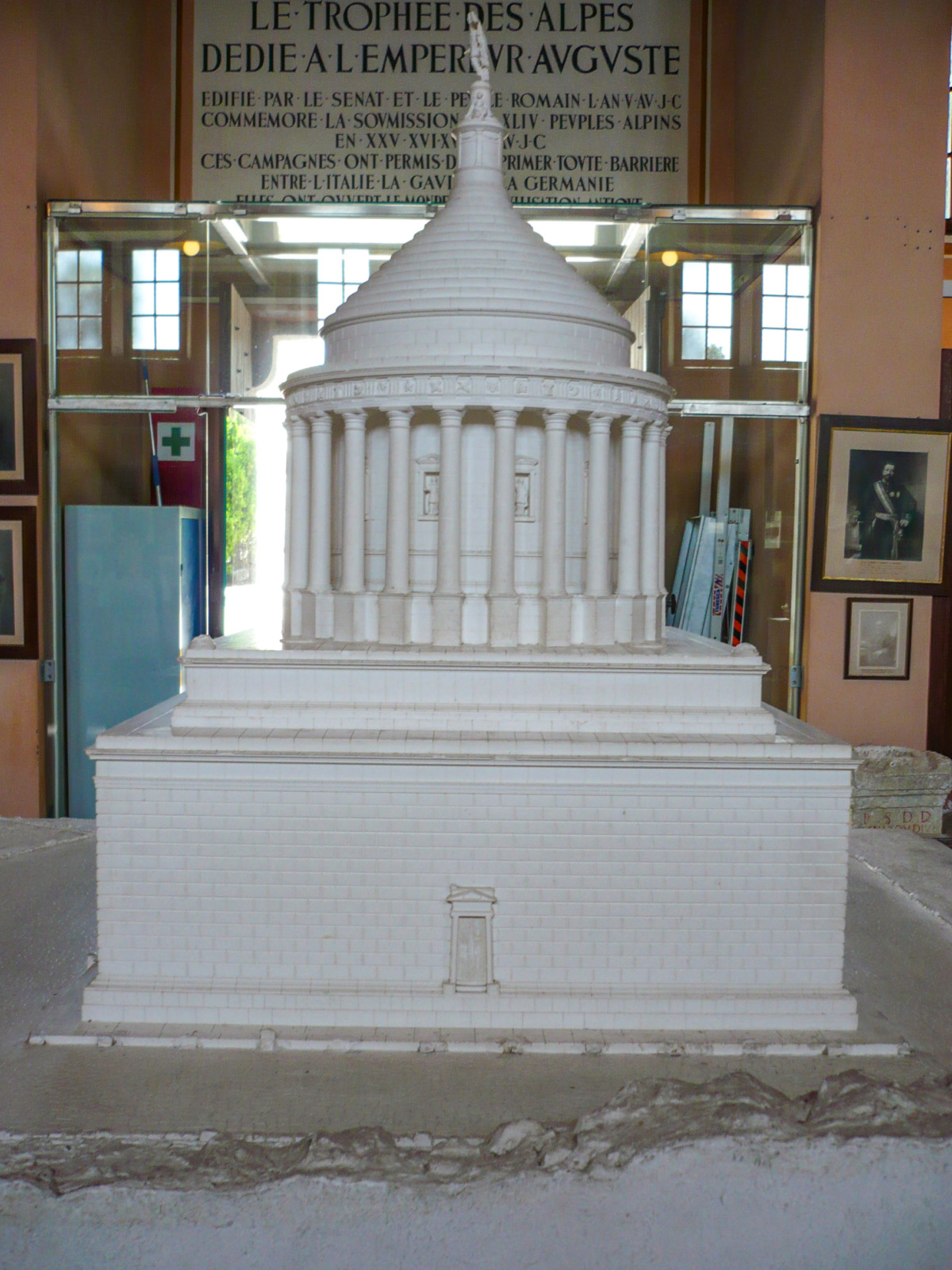
A strong political message
Monuments of this kind were raised throughout the Roman Empire to honour Roman victories. They were often set up on borders or former battlefields. The Tropaeum Alpium in La Turbie also affirmed a solid political message of Romanisation upon the conquered territories.
The 8th Wonder of the World!
Also of enormous proportions, the monument’s remains are only a tiny part of the original structure.
The Tropaeum Alpium originally comprised:
- a rotunda of 24 columns
- that supported a stepped conical roof and
- topped by a giant statue (possibly of Augustus) reaching a height of 49 metres.
Its circumference was 33 metres. The stones used for its construction were made of white limestone from a local quarry only 500 metres away.
Reconstitution of the monument in today’s La Turbie
Below is a photo montage showing what the original monument would look like today:
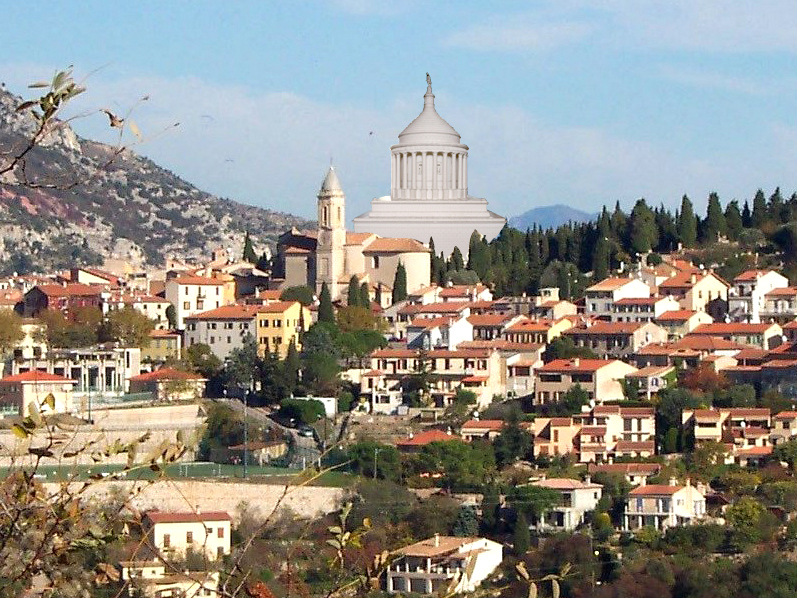
The monument could well have become the eighth wonder of the ancient world.
The names of the subdued tribes
The names of the tribes subdued by the Romans were shown on its base. Pliny the Elder recorded the complete mention:
“To the emperor Augustus, son of the deified [Julius Caesar], Pontifex Maximus, in the 14th year of [his] Imperial command (and the 17th of [his] tribunician power, the Roman Senate and people [dedicate this] because under his leadership and auspices, all the Alpine peoples, from the Upper Sea to the Lower Sea [ie from the Adriatic to the Tyrrhenian], were submitted to the authority of the Roman People“.
Then followed a long list of 45 Alpine tribes overcome by the Romans that occupied the province later called ‘The Maritime Alps’.
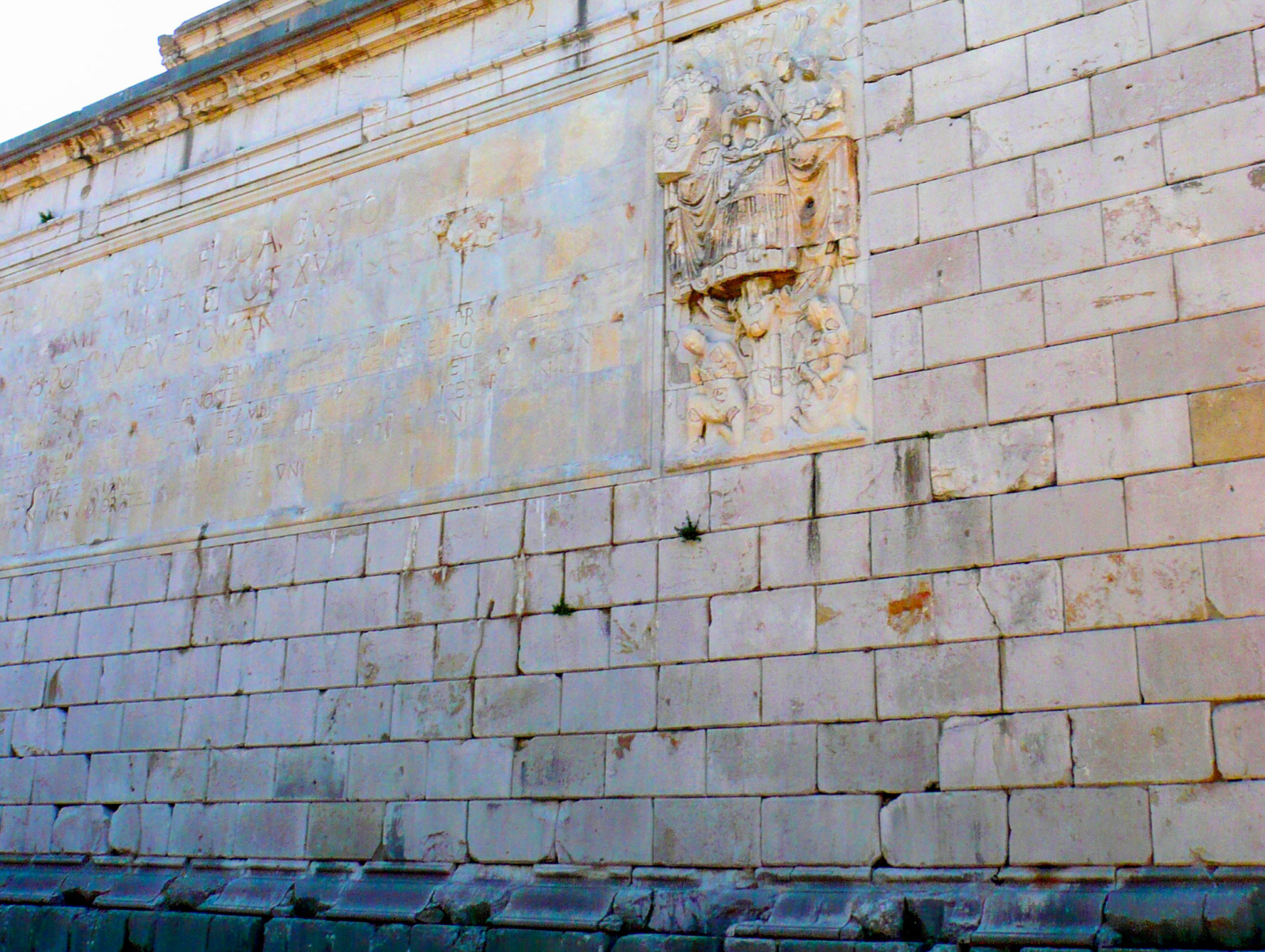
A monument in ruins
At the fall of the Roman Empire in the 5th century, invaders such as the Visigoths and the Vandals often damaged the monument.
During the Merovingian era, the Trophy was not much considered by the Christian authorities of the time, who viewed it as a Pagan heritage. The monks of Lérins Abbey consequently destroyed its statues.
![Trophy of Augustus © Anne Rodelato - licence [CC BY-SA 3.0] from Wikimedia Commons](https://frenchmoments.eu/wp-content/uploads/2014/08/Trophée-dAuguste-La-Turbie-©-Anne-Rodelato-licence-CC-BY-SA-3.0-from-Wikimedia-Commons.jpg)
During the Middle Ages, the monument lay in the territory of the House of Savoy and served as a fortress with houses flanked by the surrounding wall.
During the War of the Spanish Succession, France declared war on the House of Savoy. When the French troops invaded the County of Nice, Louis XIV ordered to dismantle the Tropaeum Alpium, as were other regional castles and fortresses (Nice, Èze, Sainte-Agnès). The stones were later used to build houses in La Turbie and the 18th-century church Saint-Michel.
Restoration of the Tropaeum Alpium
At the beginning of the 20th century, archaeologists partially restored the monument. Only a few columns remain today from the colonnade that once circled the Trophy, giving the monument its peculiar truncated silhouette. Today its height reaches 35 metres.
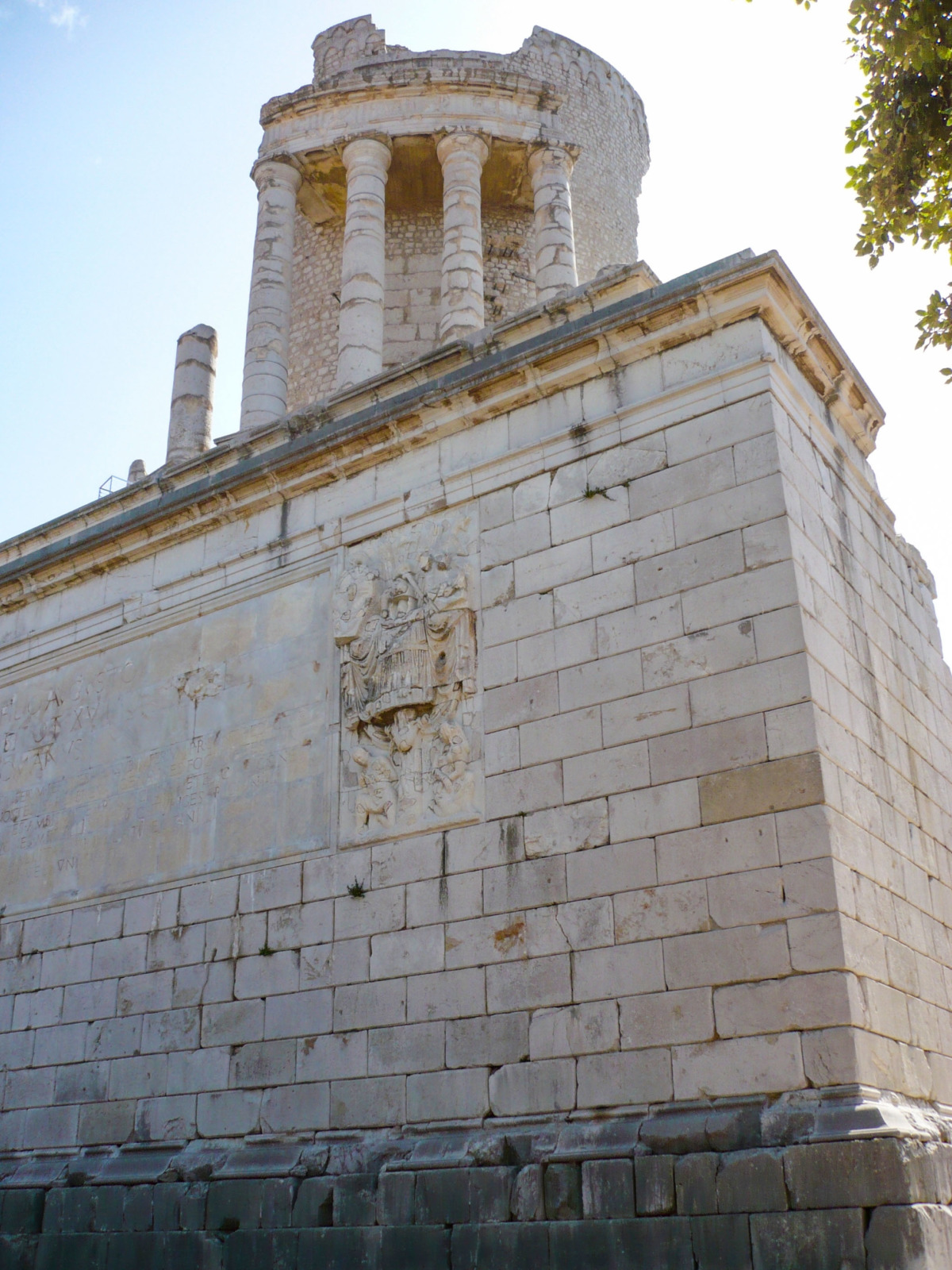
There is a museum about the Trophy on the grounds, which recalls its history and has a model replica of the original monument.
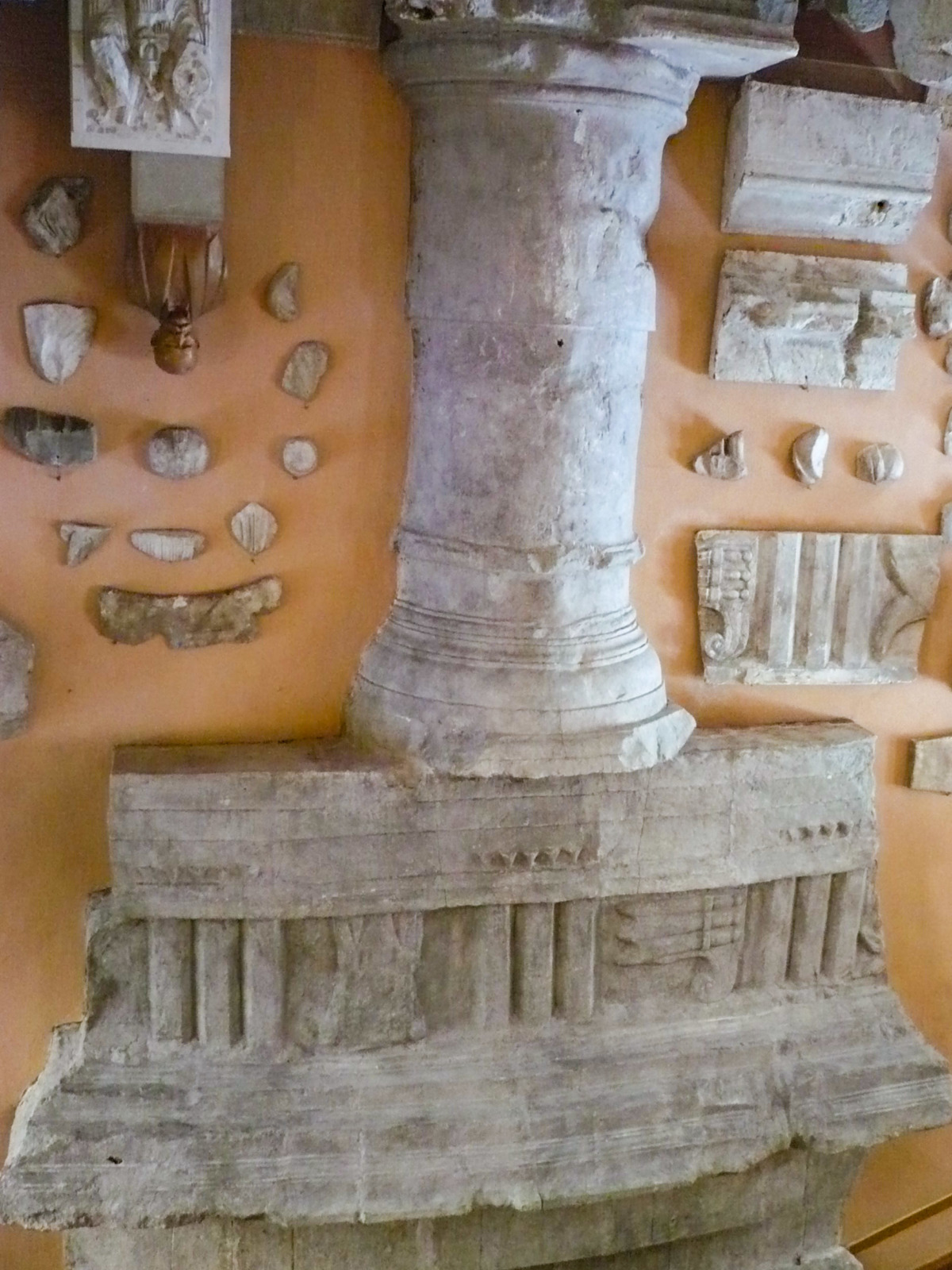
From there is a superb view of Monaco and the Mediterranean Sea.
Buy your ticket here to visit the Trophy of Augustus!
Tropaeum and Trophy
The imposing monument to the glory of Augustus and the power of Rome is the only structure still standing today in Western Europe.
The Greek word “tropaion” and Latin “tropaeum” gave the English word “trophy” and the French word “trophée” (of masculine gender).
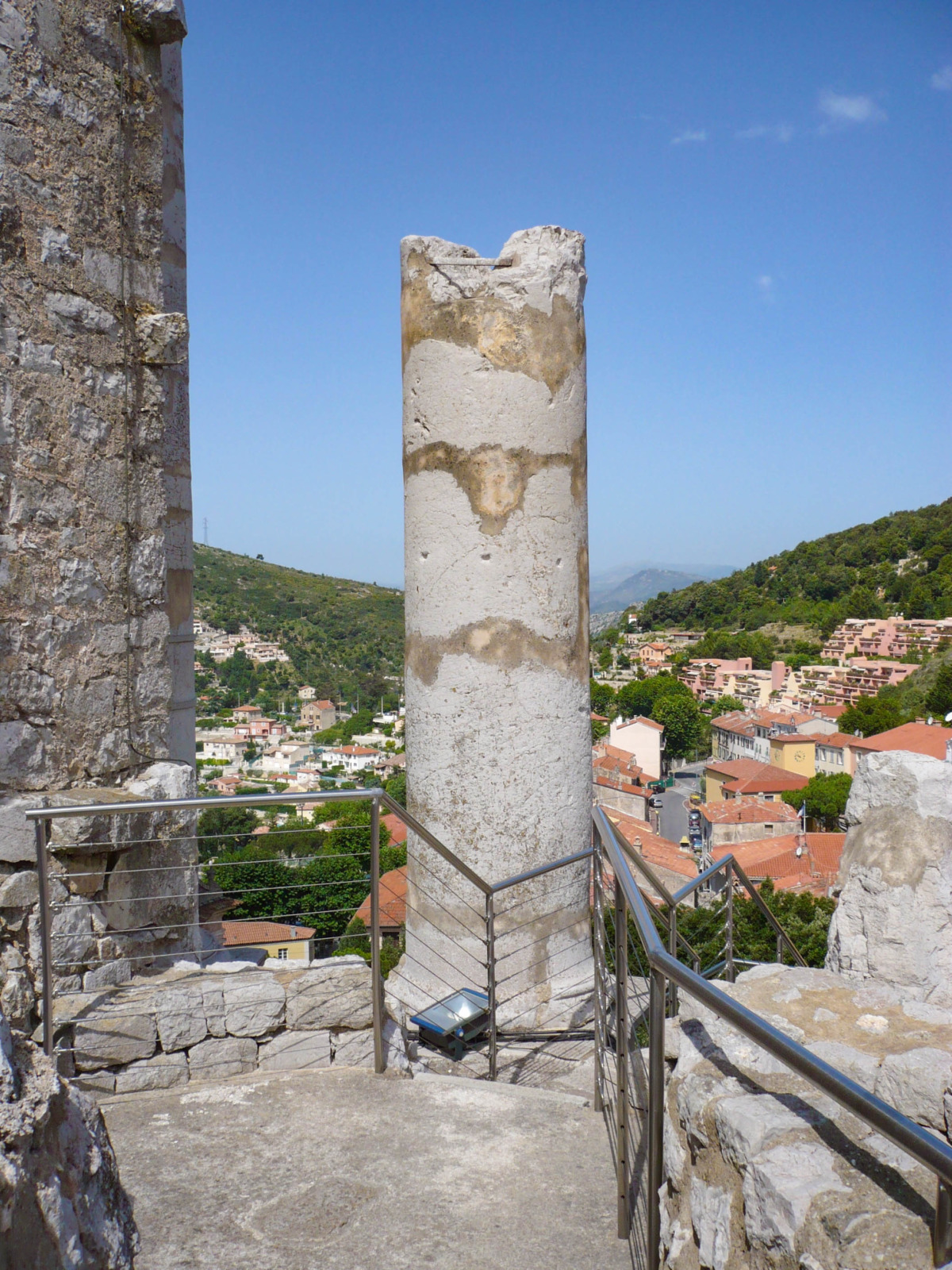
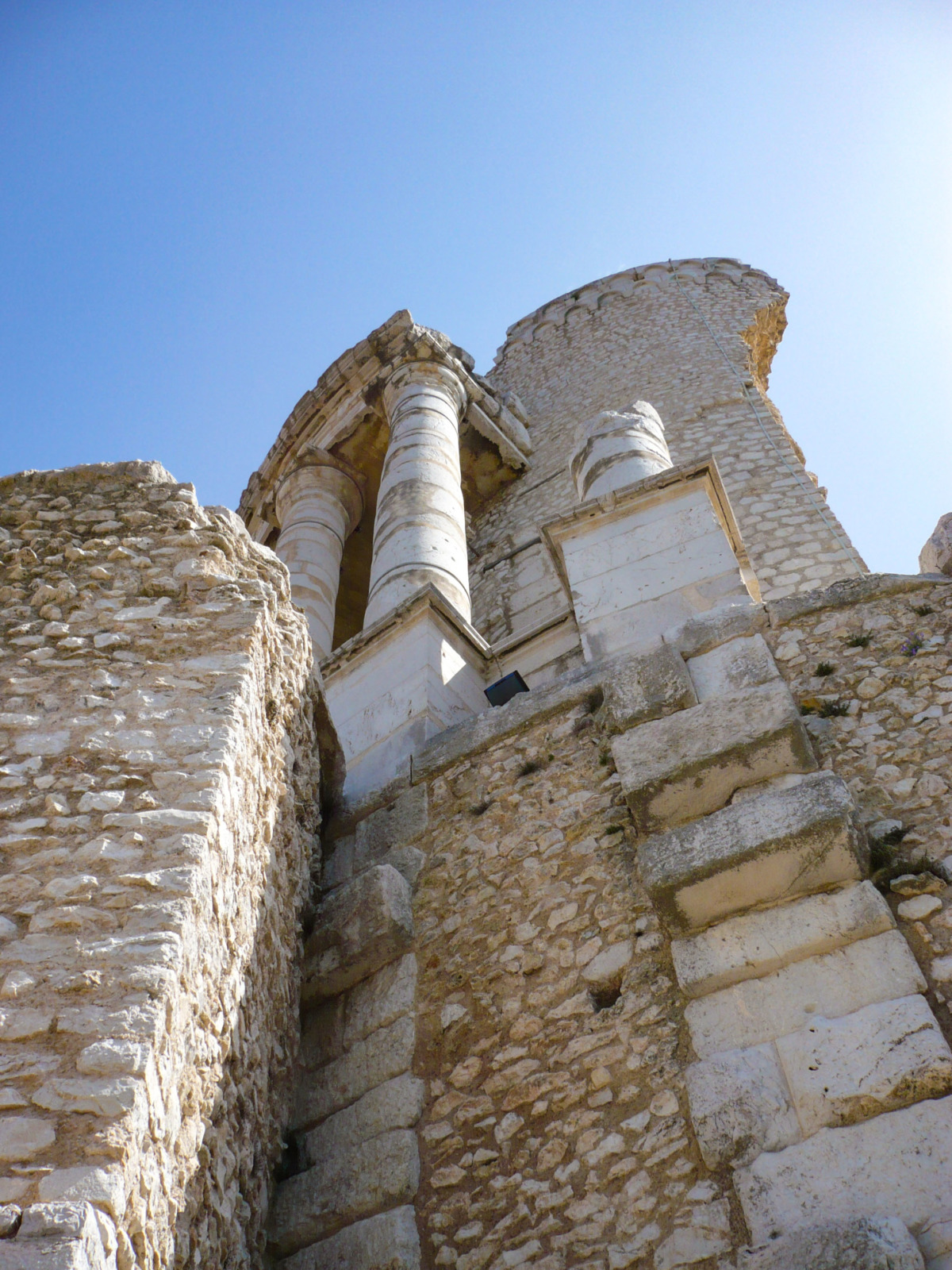
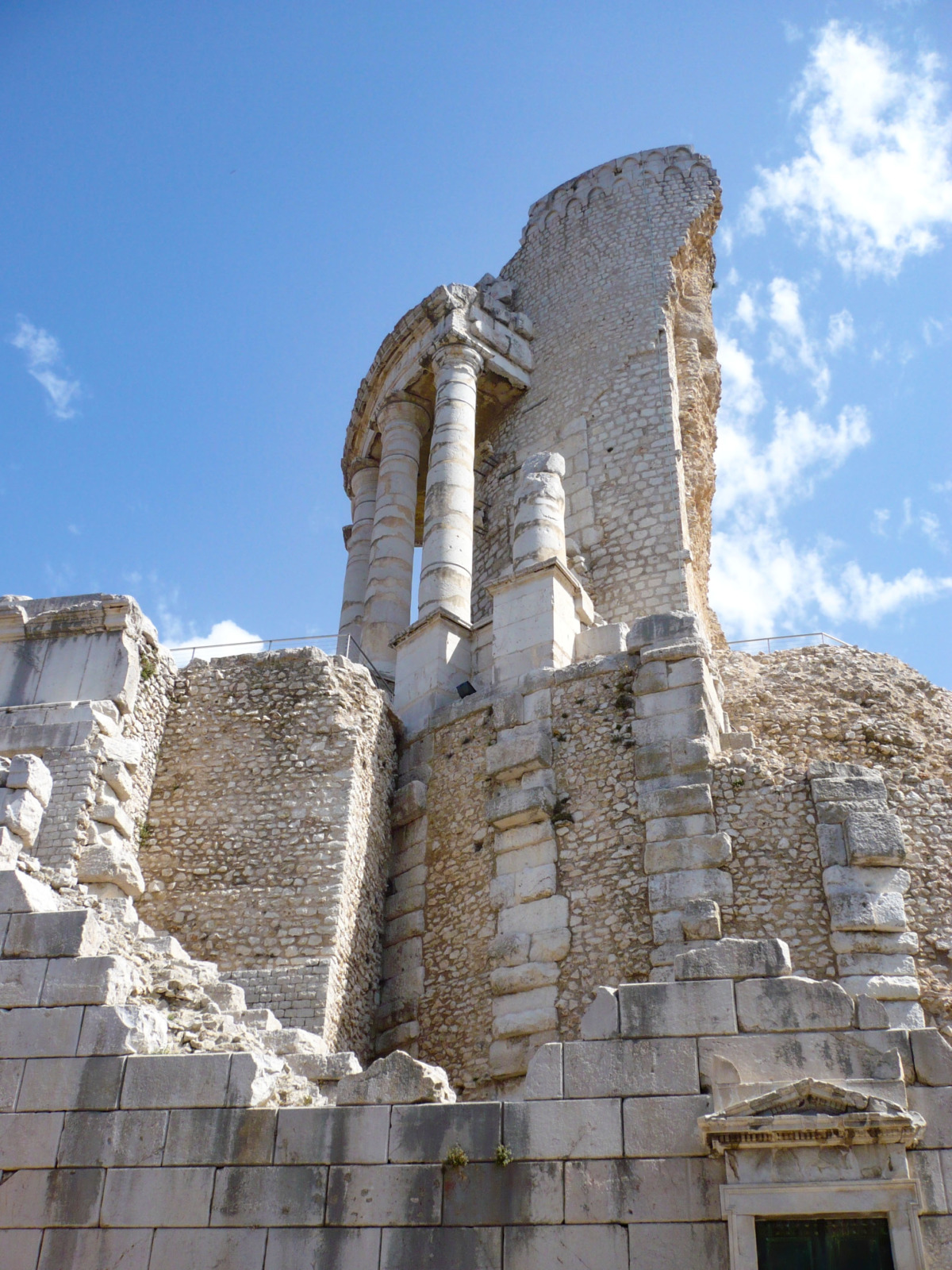
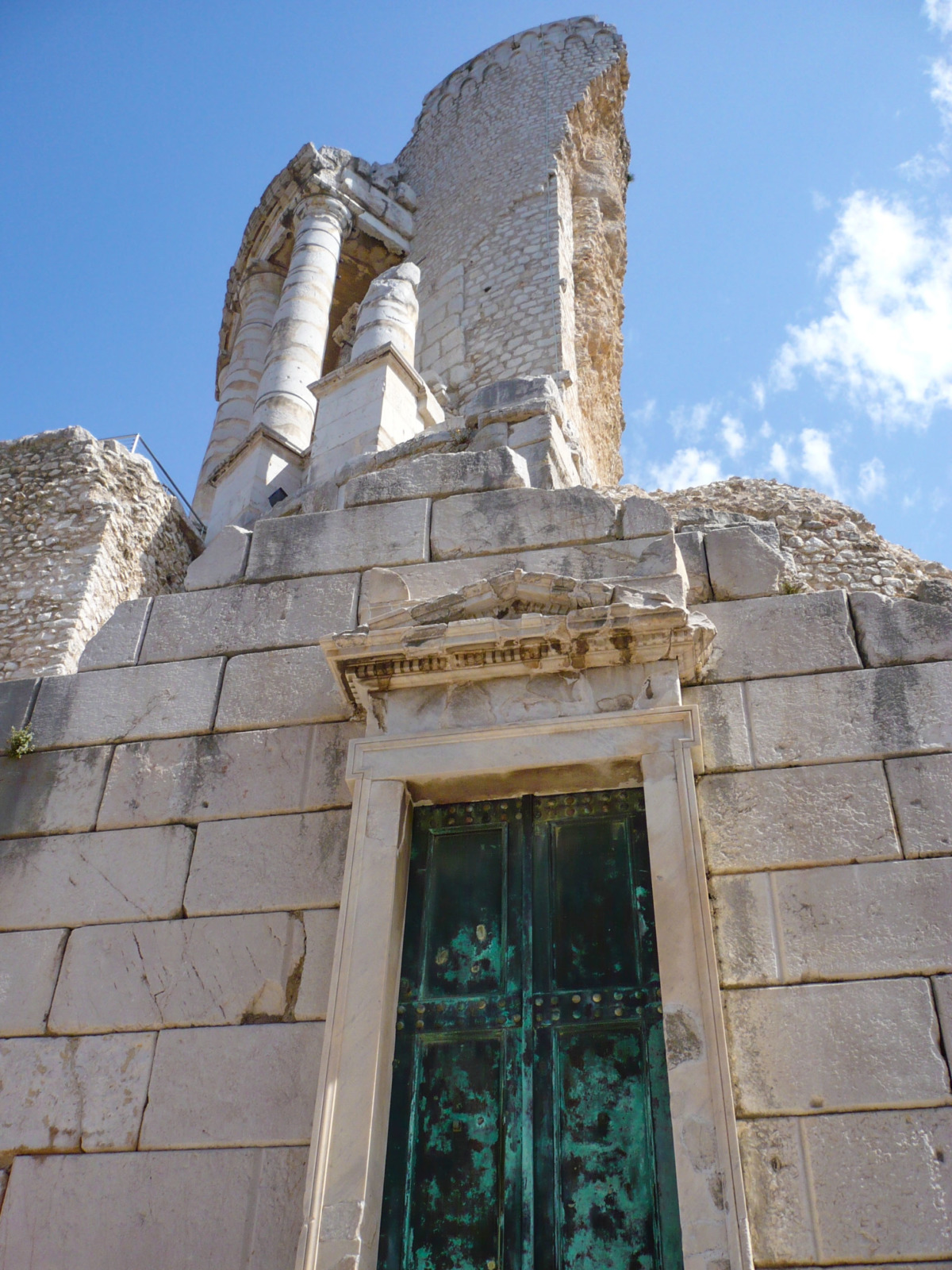
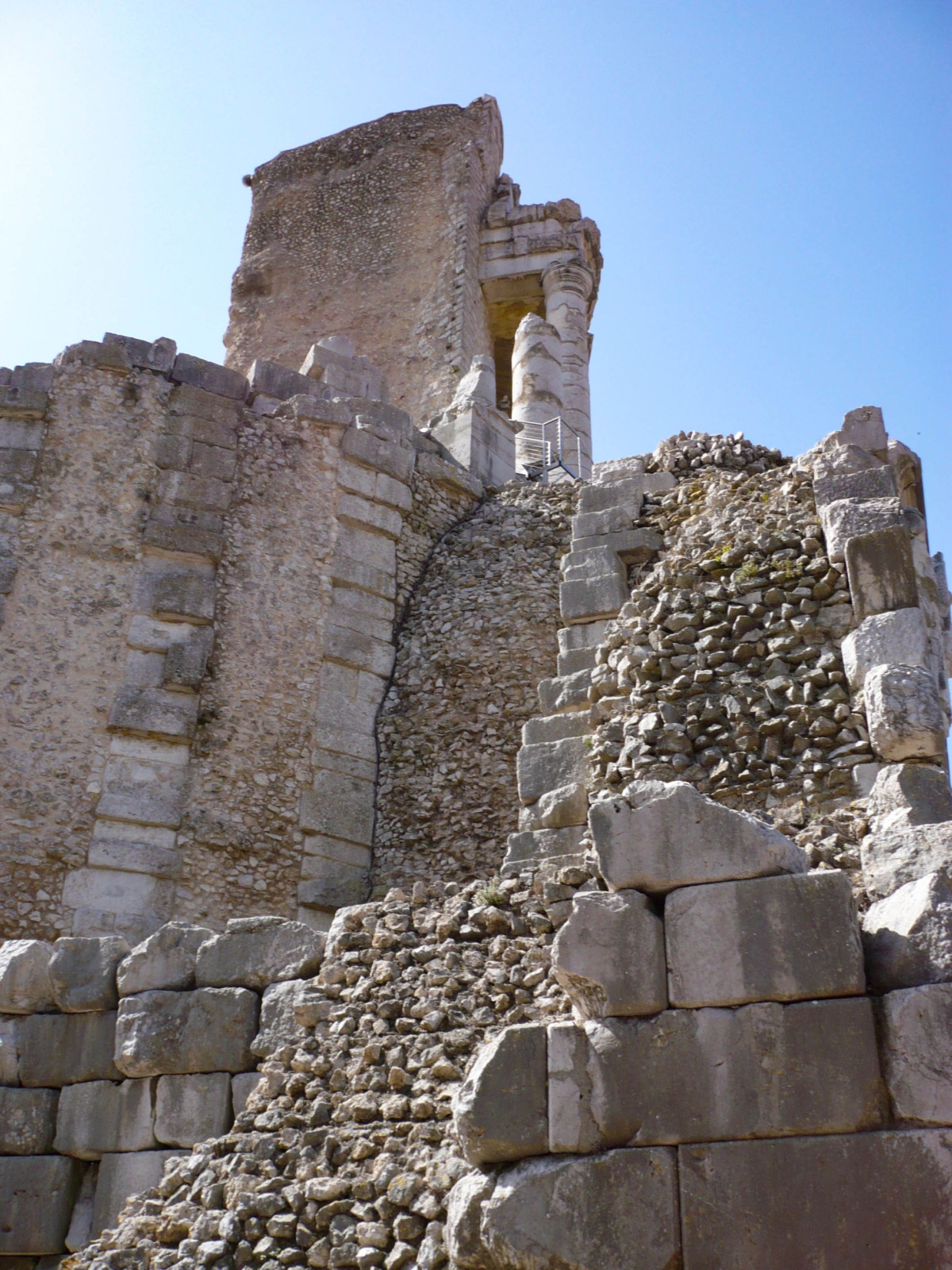
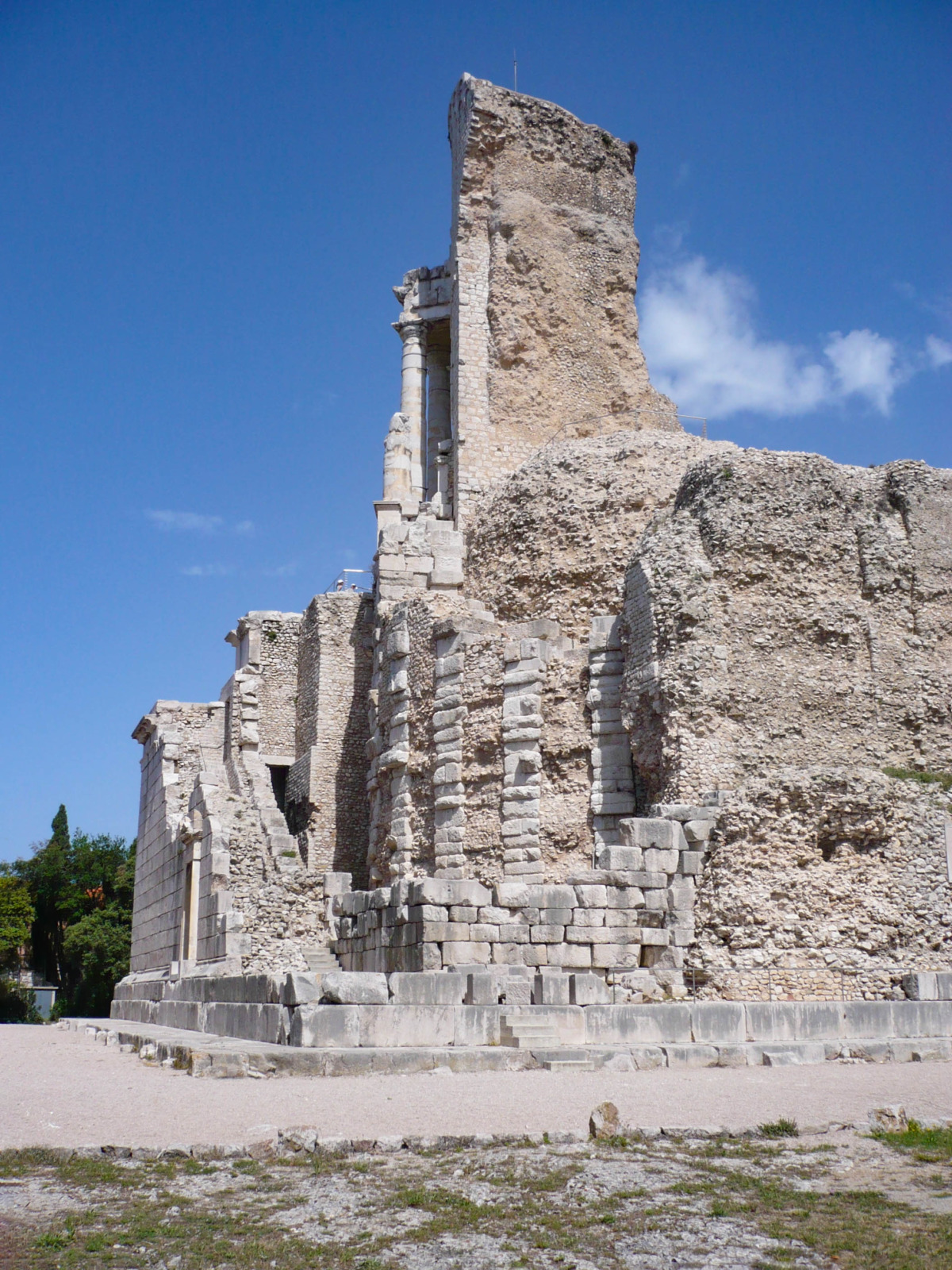

The old village of La Turbie
Tourists often bypass the centre of La Turbie, although it is quite an attractive village to visit.
![La Turbie © avu-edm - licence [CC BY 3.0] from Wikimedia Commons](https://frenchmoments.eu/wp-content/uploads/2014/08/La-Turbie-02-©-avu-edm-licence-CC-BY-3.0-from-Wikimedia-Commons.jpg)
Rising to the Roman Trophy, La Turbie contains the typical Provençal features expected of a perched village: narrow paved streets, old houses, arch passages, and a Baroque church (built in 1764). Parts of the medieval fortifications (12th-13th centuries) are still visible.

The medieval village is relatively small but well-preserved.
You can enter it through several streets. I advise you to go through one of the three gates cut into the medieval wall:
- the Portail Est (Cours Albert 1er de Monaco, near the Place de la Crémaillère)
- the Portail Nord (Place Théodore de Banville)
- and the Portail Ouest (Montée de la Fontaine, near the Place Neuve)
- A fourth gate, the Portail Sud, is also at the Place de l’Eglise and Rue Capouane intersection, which leads to the cemetery.
Stroll through the maze of tiny cobbled streets of the medieval village. You will discover beautiful stone houses with flowers, arched passageways, and refreshing little fountains, not forgetting the exotic plants and bougainvillaeas that remind us that we are indeed on the French Riviera.
![La Turbie- The old village © avu-edm - licence [CC BY 3.0] from Wikimedia Commons](https://frenchmoments.eu/wp-content/uploads/2014/08/La-Turbie-01-©-avu-edm-licence-CC-BY-3.0-from-Wikimedia-Commons.jpg)
Discover the beautiful classical façade of the Chapel of the white penitents or Chapel Saint-Jean-Baptiste (18th century) on the small Place Saint-Jean.
![La Turbie - Chapelle Saint Jean Baptiste © Jaimelaime - licence [CC BY-SA 4.0] from Wikimedia Commons](https://frenchmoments.eu/wp-content/uploads/2014/08/La-Turbie-chapelle-Saint-Jean-Baptiste-©-Jaimelaime-licence-CC-BY-SA-4.0-from-Wikimedia-Commons.jpg)
The church of Saint-Michel
The baroque church of Saint-Michel dates from 1764. It was built outside the medieval ramparts, presumably with stones from the Trophy of Augustus.
![The façade of Saint-Michel church © Jaimelaime - licence [CC BY-SA 4.0] from Wikimedia Commons](https://frenchmoments.eu/wp-content/uploads/2014/08/La-Turbie-Eglise-Saint-Michel-©-Jaimelaime-licence-CC-BY-SA-4.0-from-Wikimedia-Commons.jpg)
The monument has a square bell tower with Corinthian pilasters and a dome of glazed tiles.
The church contains many fine paintings, such as a 15th-century Virgin of the Nice-Brea School.
The nave and chapels, barrel-vaulted on high pilasters, are covered with frescoes and stucco.
![Inside the Saint Michel church of La Turbie © Finoskov - licence [CC BY-SA 4.0] from Wikimedia Commons](https://frenchmoments.eu/wp-content/uploads/2014/08/La-Turbie-Eglise-Saint-Michel-©-Finoskov-licence-CC-BY-SA-4.0-from-Wikimedia-Commons.jpg)
Note the 17th-century communion table in onyx and agate and the polychrome marble high altar from the Abbey of Saint-Pons in Nice.

The view from the cemetery
Go up to the cemetery to enjoy a beautiful view of the Trophy of Augustus and the village’s roofs. At the top, you reach the Chemin de la Batterie. It is here that you will enjoy a breathtaking view of Monaco.
The mountains of La Turbie
Two emblematic mountains dominate La Turbie and the surrounding region:
- La Tête de Chien
- Le mont Agel
The Tête de Chien
Situated in the commune of La Turbie, the Tête de Chien (literally “Dog’s Head”) is an iconic mountain dominating Monaco.
![View of La Turbie and the Tête de Chien moutain © Me - Bhu z Crecelu - licence [CC BY-SA 3.0] from Wikimedia Commons](https://frenchmoments.eu/wp-content/uploads/2014/08/Tete-de-chien-©-Me-Bhu-z-Crecelu-licence-CC-BY-SA-3.0-from-Wikimedia-Commons.jpg)
Reaching an altitude of 550 m above sea level, the rocky promontory descends abruptly to the coast, where lies the Principality of Monaco.
![The view to Monaco from Tête de Chien in La Turbie © avu-edm - licence [CC BY 3.0] from Wikimedia Commons](https://frenchmoments.eu/wp-content/uploads/2014/08/Monaco-from-Tete-de-Chien-©-avu-edm-licence-CC-BY-3.0-from-Wikimedia-Commons.jpg)
The summit offers a spectacular view from Bordighera in Italy to the Esterel Mountains.
Le Mont Agel
Located in the commune of Peille, Mount Agel is an emblematic summit of the Alps, which dominates La Turbie and part of the French Riviera.
From the summit (1151 metres above sea level), the view extends over Monaco and the French communes of Beausoleil, Roquebrune-Cap-Martin and Gorbio.
The mountain has been strategically positioned since ancient times and houses military air detection facilities.

Parc Départemental de la Grande Corniche
If you want to view La Turbie with the sea in the background, climb to the top of the Cime de la Forna (621 m), west of the village. Take the Chemin de la Forna from the Route de Nice (D2564).
You can continue along the path that follows the cornice to the summit of La Simboula (676 m). There is an orientation table with a view of the snow-covered peaks of the Alps to the north and the south, the Riviera from Bordighera (Italy), to the Esterel massif.
Below you will find a very picturesque view of the hilltop village of Eze.
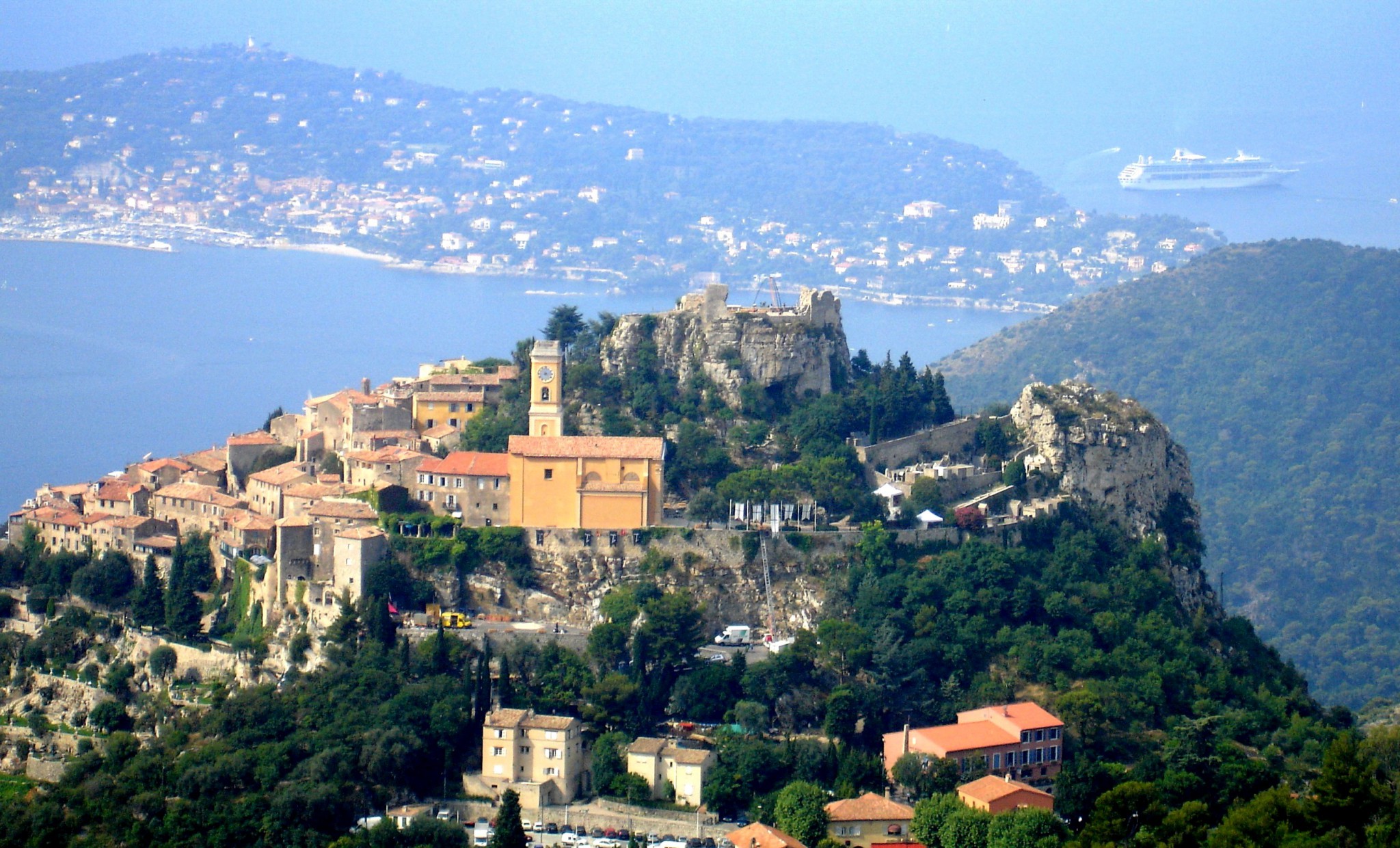
English-French Vocabulary
(f) for féminin, (m) for masculin, (adj) for adjective and (v) for verbs
- Alps = Alpes (f,p)
- Gallia Narbonensis = Gaule narbonnaise (f)
- Gaul = Gaule (f)
- French Alps = Alpes françaises (f,p)
- French Riviera = Côte d’Azur (f)
- House of Savoy = Maison de Savoie (f)
- Maritime Alps = Alpes Maritimes (f,p)
- Mediterranean Sea = Mer Méditerranée (f)
- Middle-Ages = moyen-âge (m)
- monument = monument (m)
- mountain = montagne (f)
- perched village = village perché (m)
- Pliny the Elder = Pline l’Ancien
- principality = principauté (f)
- Roman = Romain (m) / Romaine (f)
- Roman Empire = Empire romain (m)
- Rome = Rome
- tribe = tribu (f)
- Tropaeum Alpium = Trophée des Alpes (m)
- trophy = trophée (m)
- village = village (m)
- war = guerre (f)
Pin it for later!

Featured image: Stock Photos from Inu – Shutterstock



